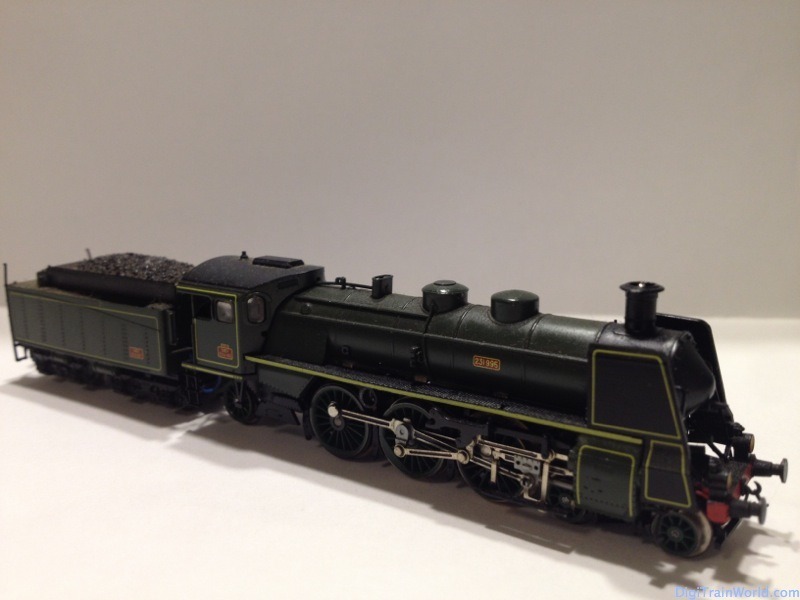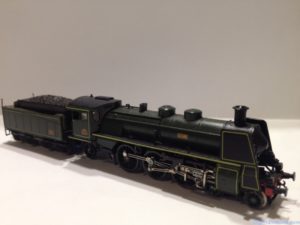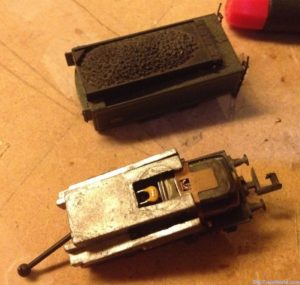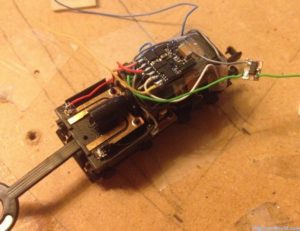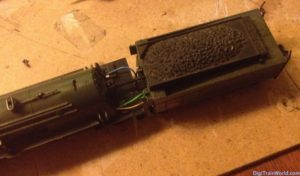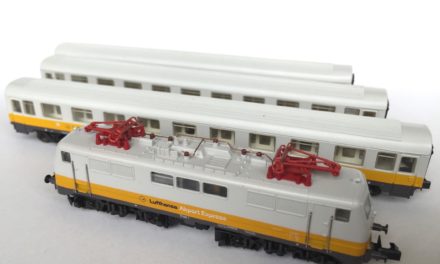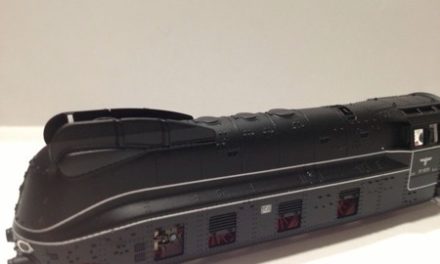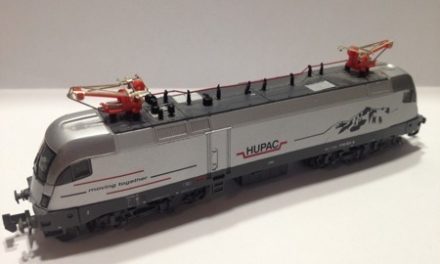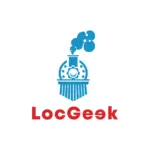I haven’t had much model train time lately, here is quick update to show I haven’t forgotten the blog.
Steam, as it should be
As you know, I am more a fan of modern trains. I had this old Arnold locomotive, bought when I was a kid. It was my only locomotive with an actual smoke generator. Arnold released a few of these, and then stopped. The reason seems to be that smoke generators in N-Scale are highly unreliable (I this model is no exception). In fact, the main “smoke generator” manufacturer in Germany, Seuthe, has stopped making N-scale generators.
DCC-ing with smoke
I won’t detail all the steps involved. I used an ESU Lokpilot Micro v4.0 decoder, but ran into a problem: it only has 2 amplified outputs. For the first time, I had to install an “amplifier” (i.e. a transistor) on a logical output. Even knowing nothing about those transistors (also called apparently “MOSFETs”), I managed to find a model that would work with the decoder. This way, the Lokpilot now has 3 outputs: lights (front and back), plus one amplified output for the smoke generator.
Decoder Installation
Yet another project that started being fun…and ended up being a tedious adventure for an inexperienced hobbyist. I actually burned a decoder, because I had failed to see the electrical connection between the smoke generator and the chassis of the locomotive (hence one side of the track).
The smoke generator doesn’t always start immediately. But it has been the same way, more than 10 years ago without DCC.

